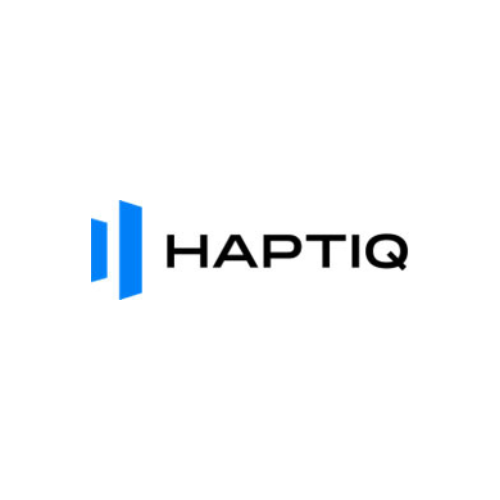Imagine a tech leader riding high in marketing automation, yet grappling with fierce competition and a punishing stock market—until a private equity firm steps in, fueling innovation, sharpening its enterprise focus, and turning it into a billion-dollar juggernaut.
That’s the story of Marketo, acquired by Vista Equity Partners for $1.8 billion in 2016 and sold to Adobe for $4.75 billion in 2018 after a bold reinvention. Could such a transformation unlock your business’s potential? Private equity (PE) thrives on these high-stakes pivots, leveraging private equity investment strategies to reshape companies and drive exceptional value.
These strategies—buyouts, growth capital, and distressed asset investments—are the backbone of PE’s ability to spark growth, recovery, or reinvention. Each approach offers a unique path to profitability, tailored to a company’s stage and needs.
By diving into their mechanics, benefits, and challenges, this article reveals how private equity investment strategies empower businesses to thrive. Solutions like Haptiq’s Pantheon Value Creation amplify these efforts, providing tailored support to maximize outcomes.
The Buyout Investment Strategy
The buyout approach is a cornerstone private equity investment strategy, emphasizing control, transformation, and profitability. By acquiring a majority stake—often via leveraged buyouts (LBOs)—PE firms reshape companies to unlock their full potential. Here’s how this private equity strategy works, based on a proven, multi-faceted process:
How the Buyout Approach Works
1. Target Identification
Private equity firms meticulously identify companies that align with their strategic and financial goals. Key characteristics include:
- Mature Businesses with Consistent Cash Flows: Firms prioritize companies with stable revenue and predictable profitability, providing a foundation for servicing debt in an LBO.
- Strong Market Positions but Room for Improvement: Ideal targets lead or compete strongly in their industry yet have inefficiencies or growth potential ripe for optimization.
- Industries with Consolidation or Growth Potential: Sectors with fragmented markets or growth prospects allow firms to consolidate or scale operations for greater market share.
These criteria ensure the acquired business balances stability with significant upside potential.
2. Leveraged Financing
Leveraged financing is a hallmark of buyouts, with debt often funding 60-70% of the deal. The mechanics include:
- Securing Debt Against the Acquired Company: The company’s assets act as collateral, freeing up PE capital for other investments.
- Cash Flow-Driven Repayment: Debt is repaid using the company’s cash flows, aligning obligations with performance.
- Enhanced Returns: Less upfront equity amplifies returns when the company’s value grows.
Leverage boosts rewards but requires careful management to avoid excessive debt burdens.
3. Value Creation
Post-acquisition, PE firms drive profitability through:
- Operational Efficiency: Optimizing processes, cutting costs, or improving productivity—e.g., automating workflows or renegotiating contracts.
- Revenue Growth: Expanding markets, launching products, or refining sales, often using the firm’s network and expertise.
- Strategic Repositioning: Shifting the business model to align with trends, like adopting new tech or focusing on high-growth sectors.
Success hinges on executing these changes while aligning management with new goals.
4. Exit Planning
Exits lock in returns, planned early to match market conditions. Common routes include:
- Strategic Sales: Selling to a business seeking expansion, often quick and lucrative.
- Initial Public Offerings (IPO): Going public offers high returns but demands compliance and performance.
- Secondary Sales: Selling to another PE firm suits businesses with ongoing potential.
Exits succeed by strengthening finances and crafting a narrative highlighting growth and potential.
Successful exits rely on:
- Strengthening Finances: Ensuring the company is financially stable and attractive to potential buyers.
- Building a Compelling Narrative: Highlighting the company’s growth story, market position, and future potential to maximize valuation.
Example: In 2007, KKR acquired Dollar General for $7.3 billion, a retail chain with strong cash flows but operational inefficiencies. By modernizing stores, optimizing supply chains, and expanding its footprint, KKR took Dollar General public in 2009 at $21 per share, later selling its stake in 2013 for $60.71 per share, earning a massive return. This case illustrates how buyouts can transform established businesses into market leaders.
Buyouts are a powerful private equity strategy, balancing risk and reward through leverage and transformation. Solutions like Haptiq’s Pantheon System Integration enhance this approach by streamlining operations and integrating innovative technologies.
Growth Capital Investments

Growth capital is a collaborative private equity investment approach, propelling profitable companies into their next growth phase. Unlike buyouts, it involves minority stakes—typically 20-40%—allowing founders to retain control while scaling. Here’s a detailed look at this private equity strategy:
Growth Capital Investments: A Brief Overview
Growth capital targets businesses with strong fundamentals needing funds to expand. It’s ideal for stable, profitable companies aiming for market dominance or innovation without relinquishing control. The approach fosters sustainable growth through partnership.
Key Objectives of Growth Capital
- Market Expansion: Funds fuel entry into new regions or segments, boosting revenue through broader reach.
- Product Development: Capital supports new products, refinements, or R&D, keeping firms competitive in dynamic markets.
- Strengthening Infrastructure: Investments upgrade tech systems, logistics, or internal capabilities, enhancing scalability and long-term potential.
How Growth Capital Works
- Strategic Partnership: PE firms offer guidance, expertise, and connections, helping businesses navigate scaling challenges effectively.
- Focus on Minority Stakes: Minority investments ensure management stays motivated and aligned with long-term goals.
Example: In 2019, Summit Partners led a $150 million investment in Klaviyo, an e-commerce marketing platform with 20,000 customers. The funds fueled global expansion and AI-driven tools, growing its base to 130,000 by 2023 and leading to a $9.2 billion IPO, showcasing growth capital’s scaling power.
This private equity investment approach avoids buyouts’ debt-heavy model, focusing on organic growth. It’s less risky but requires patience, suiting tech and healthcare sectors where scaling cements leadership. Solutions like Haptiq’s insights can identify high-impact opportunities, optimizing this strategy.
Distressed Asset Investment

Distressed asset investment is a high-stakes private equity strategy, targeting underperforming or financially strained companies. By buying at a discount and restructuring, firms aim for substantial returns. Here’s how this private equity strategy unfolds:
Distressed Asset Investment: A Brief Overview
Distressed asset investment is a private equity strategy focused on acquiring companies or assets that are underperforming, facing financial difficulties, or in operational distress. These assets are often undervalued, presenting significant opportunities for private equity firms to create value through effective restructuring.
Distressed assets may include companies struggling with debt, operational inefficiencies, or market challenges. The goal is to stabilize and improve these assets, leading to profitable exits. This strategy involves higher risks but offers the potential for outsized returns for firms with the expertise to turn around distressed companies.
Why Distressed Assets?
Distressed assets are attractive because they are typically sold at a steep discount, providing an opportunity for private equity firms to acquire valuable assets for less than their intrinsic worth. This discount offers substantial upside potential if the company or asset can be restructured effectively.
Distressed companies may have valuable components such as proprietary technology, a loyal customer base, or strong market positioning, making them appealing acquisition targets. With the right expertise, a private equity firm can unlock significant value by turning these underperforming companies into profitable businesses.
How Distressed Asset Investment Works
- Acquisition at a Discount: Private equity firms target undervalued companies that have strong potential but are struggling financially or operationally. These companies may possess valuable assets such as intellectual property or a strong customer base that can be leveraged once stabilized.
- Operational and Financial Restructuring: Once acquired, private equity firms work to restructure the distressed asset. Debt restructuring involves renegotiating terms or converting debt into equity to ease financial pressure. Operational overhaul may include replacing management, optimizing processes, or refocusing the business strategy to improve profitability.
Value Extraction & Challenges

- Value Extraction: After stabilizing the distressed asset, private equity firms look to sell the company at a higher valuation or merge it with other portfolio companies to create synergies and enhance value.
- Challenges and Risks: Distressed asset investments come with significant risks, including market volatility, which can complicate turnaround efforts. Additionally, cultural resistance within the target company can hinder restructuring efforts, making it challenging to implement necessary changes and improve performance.
Example: In 2013, Apollo Global Management acquired Hostess Brands for $410 million post-bankruptcy. By streamlining production and reviving brands like Twinkies, Apollo sold Hostess for $2.3 billion in 2016, demonstrating distressed investing’s potential.
This private equity strategy focuses on recovery, unlike buyouts’ transformation or growth capital’s scaling. It’s complex but lucrative for skilled firms. Haptiq’s operational support can mitigate risks, ensuring effective turnarounds.
Conclusion
Private equity investment strategies—buyouts, growth capital, and distressed asset investments—are powerful tools for unlocking business potential. Buyouts transform mature firms with control and leverage, growth capital scales promising enterprises collaboratively, and distressed investments capitalize on recovery opportunities.
Choosing the right strategy hinges on understanding a company’s needs and market dynamics. Investors and executives can apply these insights to align investments with goals, leveraging solutions like Haptiq’s Pantheon to navigate the complexities of private equity with confidence.
FAQ Section
Q1. What are the main private equity investment strategies?
The primary private equity investment strategies are buyouts, growth capital, and distressed asset investments. Buyouts involve acquiring a controlling stake in mature companies to implement operational and strategic changes for value creation.
Growth capital focuses on minority investments in profitable companies to fuel expansion, while distressed asset investments target underperforming or financially troubled companies for restructuring and eventual resale. Each strategy is tailored to different business stages and risk profiles, offering unique pathways to generate returns.
Q2. How does growth capital differ from buyouts?
Growth capital differs from buyouts in both control and investment horizon. In growth capital, private equity firms take minority stakes, allowing existing management to retain control, and focus on scaling the business over a longer period.
Buyouts involve majority stakes and often use leverage to acquire control, with a focus on immediate transformation and a shorter horizon of 5-7 years. Growth capital is less risky but may take longer to realize returns, while buyouts aim for quicker value creation through active management.
Q3. What makes distressed asset investment appealing?
Distressed asset investment appeals due to the opportunity to acquire valuable assets at significant discounts. These assets often have strong fundamentals, like proprietary technology or loyal customers, which can be unlocked through restructuring.
The potential for high returns is substantial if the firm stabilizes and improves the company. However, this private equity strategy requires deep expertise in turnaround, making it suitable for firms with specialized skills and higher risk tolerance.



.png)

.png)

.png)




















